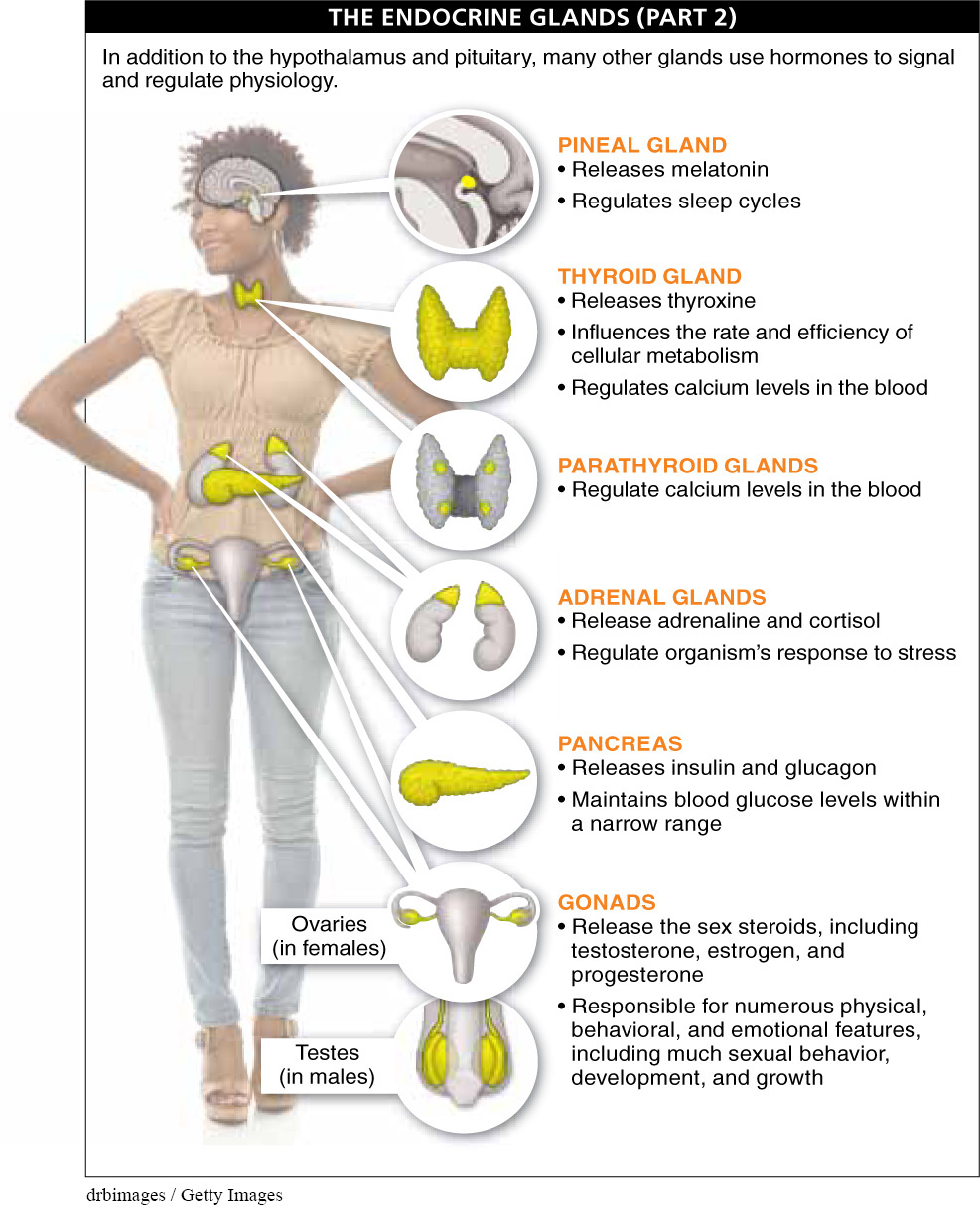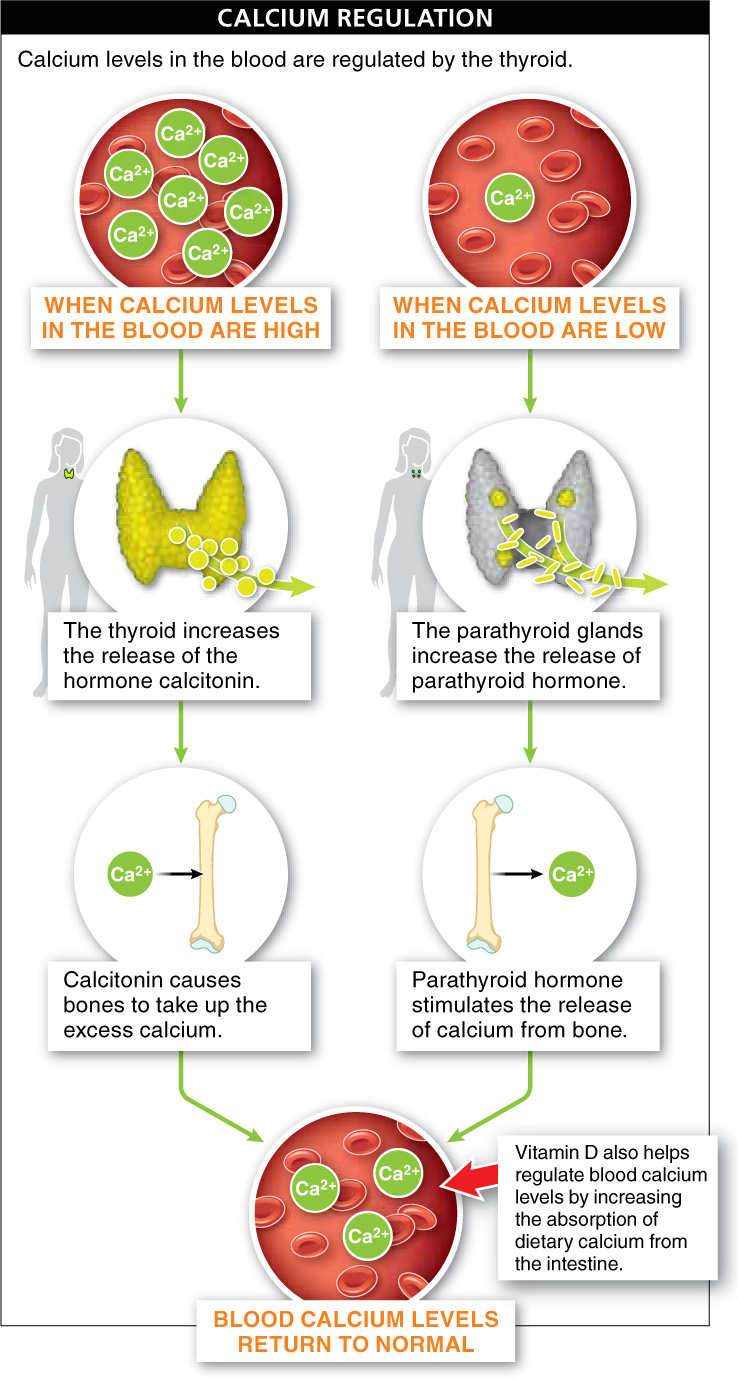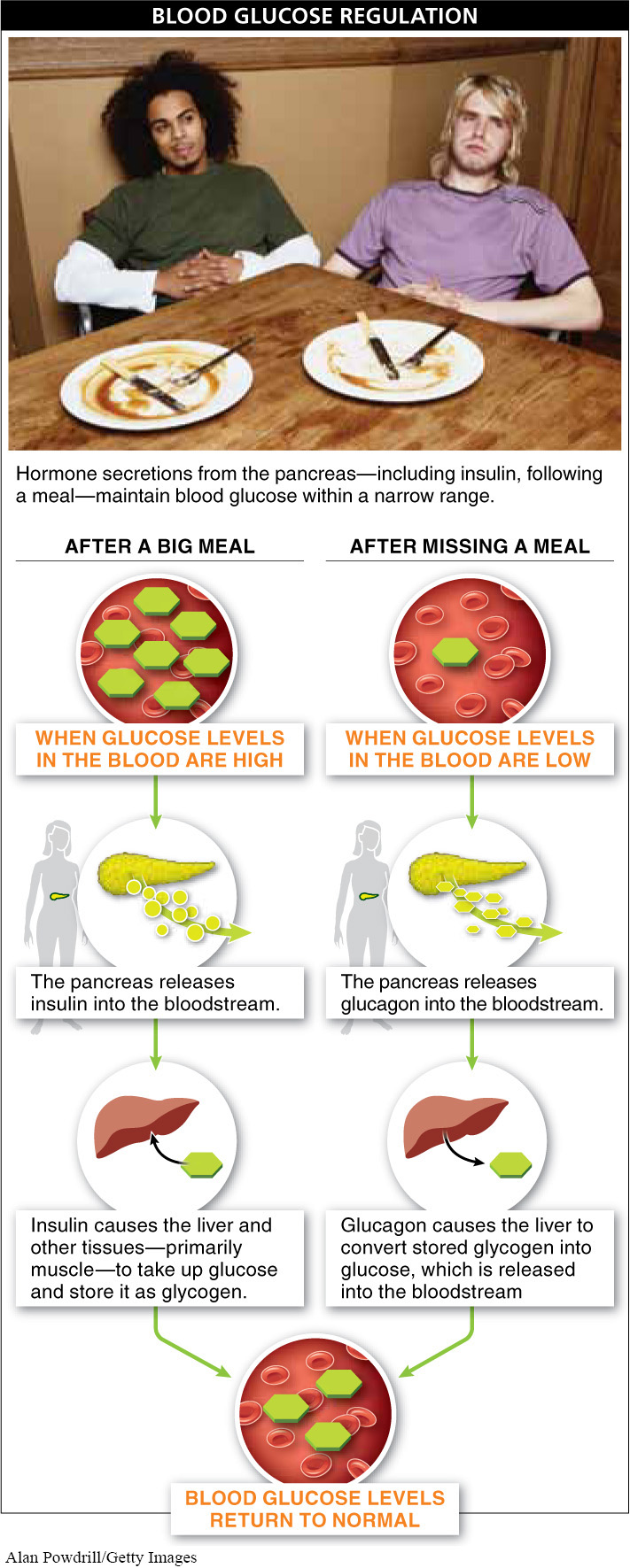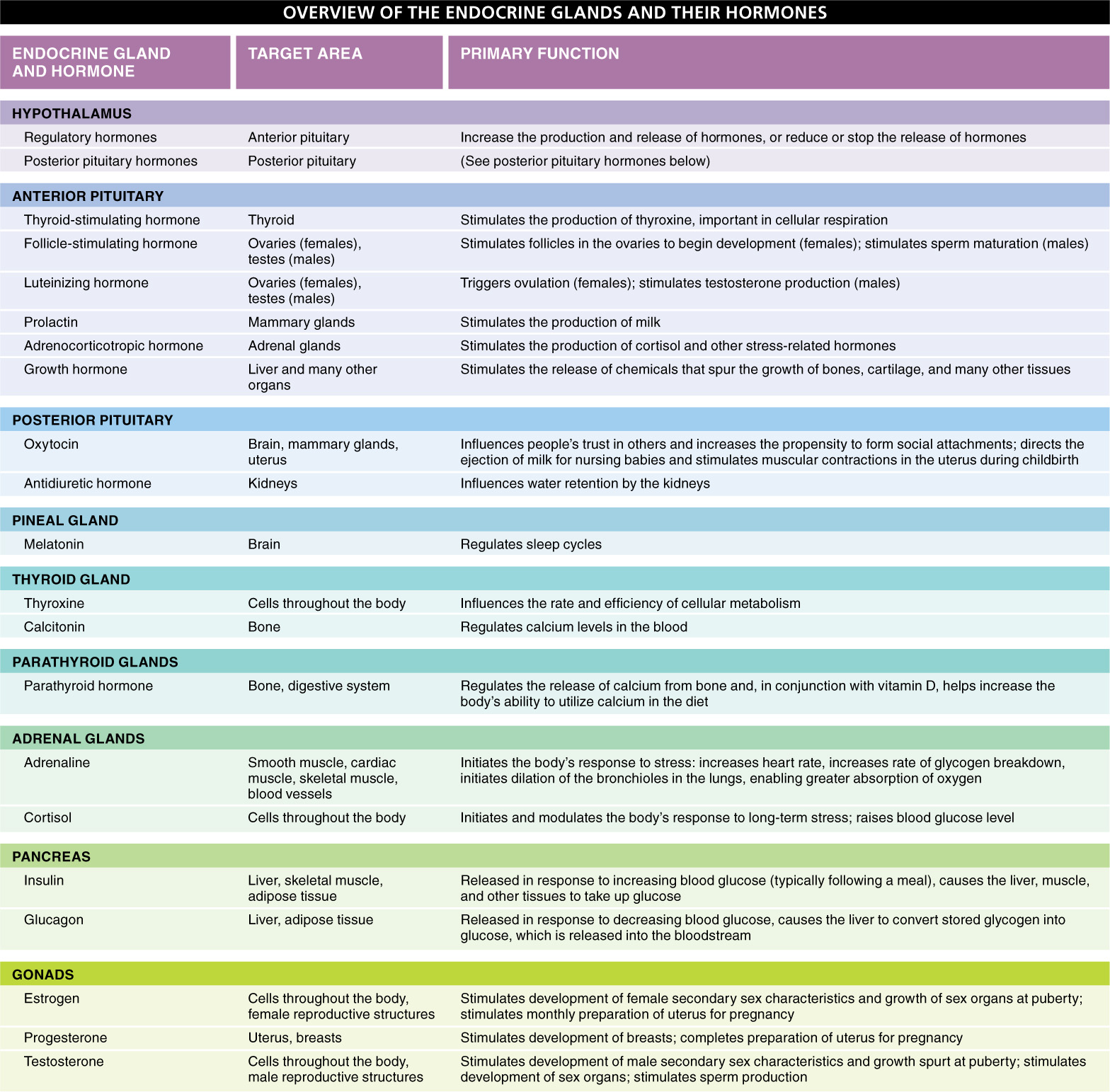The hypothalamus and pituitary gland are joined by many other glands in using hormones to signal and regulate physiology. From anxiety about public speaking, to the changes in sleep patterns after flying to a new time zone, to the changes in metabolism that accompany aging, endocrine glands throughout the body are responsible for detecting and responding to signals reflecting an organism’s internal and external environments. Here we explore the signals of some of the most important of these other endocrine glands (FIGURE 24-9).

Why is adrenaline given to people experiencing an asthma attack?
Adrenal Glands Regulating an organism’s response to stress is largely a function of the secretions of the two adrenal glands, which sit just above the kidneys and secrete the hormones cortisol and adrenaline (also called epinephrine), among others. Simply the sight of a predator is enough to initiate the “fight-

979
The stress pathways are modulated by negative feedback loops. As an animal takes action in response to a stressful situation and the source of the stress is then removed, the secretions of cortisol and adrenaline are reduced. This is how the stress response usually works in nature. But when there is no outlet by which an organism can deal with the stress, long-
Pineal Gland The 17th century philosopher René Descartes believed that the pineal gland was where the soul connected with the body. He believed this largely because the pea-
“My whole aim in life is to get near to God, that is, to get nearer to myself. That’s why it doesn’t matter to me what road I take. But music is very important. Music is a tonic for the pineal gland. Music isn’t Bach or Beethoven; music is the can opener of the soul. It makes you terribly quiet inside, makes you aware that there’s a roof to your being.”
— HENRY MILLER, Tropic of Cancer, 1934
Although the exact mechanism by which melatonin influences circadian cycles is not understood, it has been shown to have some benefits in synchronizing individuals’ sleep and wake cycles to the environment and in treating some types of insomnia, and melatonin is now sold throughout the United States.
980
Thyroid Gland One of the largest endocrine glands in humans is the thyroid gland, located in the neck, just below the Adam’s apple. It secretes hormones—



Goiter is a common health problem caused by an enlargement of the thyroid gland (FIGURE 24-11). There are several causes of goiters, and they are particularly common in areas with low iodine consumption. When iodine intake is low, the thyroid is unable to produce thyroxine (which contains iodine). This causes thyroxine levels in the body to drop. In the absence of the normal negative feedback telling the body to slow its production of thyroxine, the hypothalamus and anterior pituitary produce increasing amounts, respectively, of thyroxine-
The thyroid also regulates levels of calcium in the blood. Calcium is necessary for building and maintaining bones and teeth, and it influences the functioning of nerves and muscles. When there is too much calcium in the blood, the thyroid increases its release of calcitonin, a hormone particularly important in babies and children, which causes bones to take up the excess calcium. Additionally, embedded in the surface of the thyroid are the four small parathyroid glands. They produce parathyroid hormone, which plays a central role in regulating calcium levels in adults (FIGURE 24-12). Throughout life, bone is continually broken down and remade as minerals are lost and added. Parathyroid hormone is important in stimulating much of this continued turnover of bone, including reabsorption of old bone and production of new bone. Parathyroid hormone further reduces calcium loss in the urine, regulates the release of calcium from bone, and in conjunction with vitamin D (from the diet and produced in response to sun exposure), helps increase the body’s ability to utilize the calcium supplied in the diet.
981
Pancreas Located next to the stomach and connected to the small intestine via a short duct, the pancreas is an endocrine gland that is most important in controlling the levels of blood glucose. As we saw in Section 22-
Following a meal (particularly one rich in carbohydrates), the concentration of blood glucose rises. This stimulates release of insulin by the pancreas. Insulin in the bloodstream causes the liver and other tissues—
Conversely, after a few hours of fasting, the blood glucose level gradually drops. The reduced blood glucose triggers release of glucagon by the pancreas. Glucagon has the reverse effect of insulin, causing the liver to convert stored glycogen into glucose, which is released into the bloodstream. Rising blood glucose concentration then causes the pancreas to reduce its glucagon secretion, maintaining homeostasis through negative feedback.
Gonads The sex steroids, including testosterone, estrogen, and progesterone, are produced largely by the gonads—
A summary of the major animal hormones and their actions is in FIGURE 24-14.

982
In the next few sections, we investigate some of the gonadal hormones and see how closely linked they are to athletic performance and the attributes necessary to excel physically. We’ll also see a dark side to hormones, in the dramatic physical changes and improvements in athletic performance resulting from illegal use of hormone supplements. We also note the extreme health consequences that accompany such hormone abuse.
TAKE-HOME MESSAGE 24.5
Endocrine glands throughout the body are responsible for detecting and responding to internal and external signals. The adrenal glands regulate responses to stress. The pineal gland regulates sleep cycles. The thyroid gland influences cellular metabolism. The pancreas maintains blood glucose. Hormones from the gonads are responsible for many physical, behavioral, and emotional characteristics.
Describe how negative feedback and the hormones insulin and glucagon are involved in maintaining a fairly constant concentration of glucose in the blood.
As glucose from a carbohydrate-rich meal is absorbed into the blood, glucose levels rise. The increase in blood glucose levels stimulates the release of insulin from the pancreas. Insulin increases the uptake of glucose by liver, muscle, and other cells, thereby reducing blood glucose levels. As blood glucose levels fall, insulin secretion is reduced. After fasting for a few hours, blood glucose levels may fall below the normal range, triggering the release of glucagon from the pancreas. Glucagon causes the liver to convert stored glycogen into glucose, which is released into the bloodstream. As blood glucose levels rise, glucagon secretion is reduced.
983